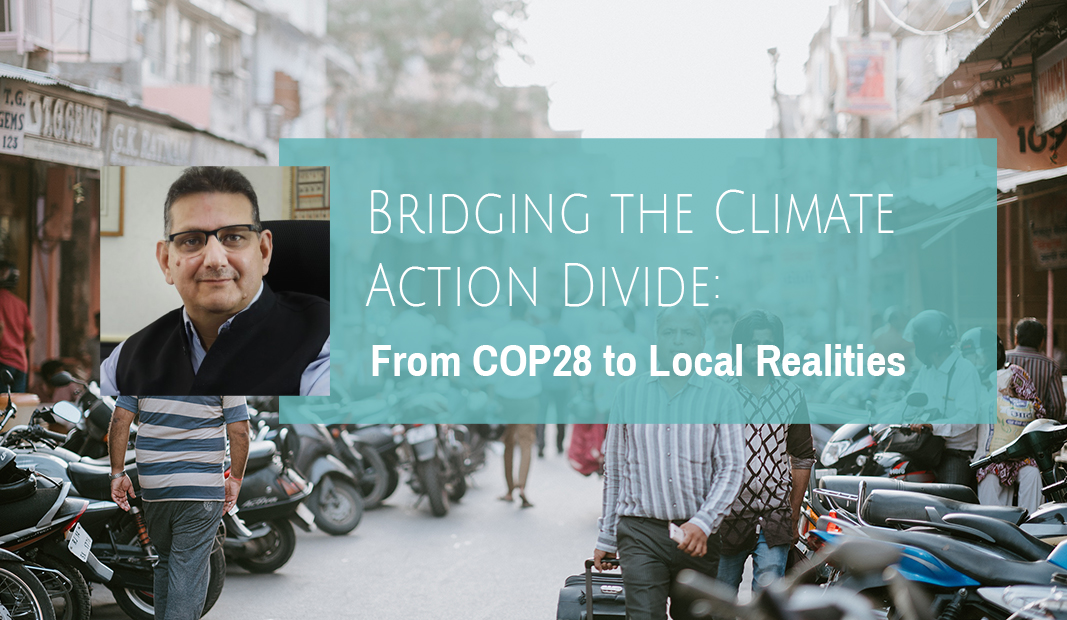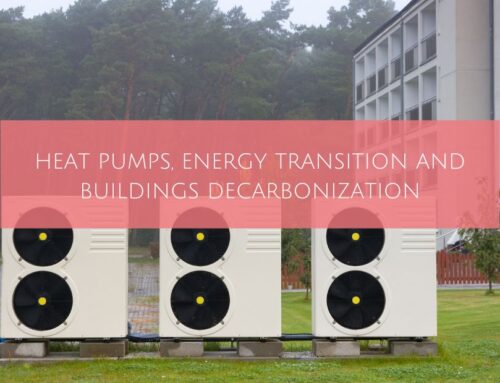by Hitesh Vaidya
GBPN Board Member
From COP28 to Local Realities
In the face of escalating climate change impacts, the recent events at COP28 have left observers both inspired and disheartened. Amidst the grandeur of global negotiations uniting stakeholders from the Global South to the Global North, addressing climate crises and local-level interventions, the stark reality of Chennai’s recent struggles with Cyclone Michaung serves as a poignant reminder of cities’ vulnerability and the urgent need for resilient infrastructure. Despite discussions on net zero, energy transitions, and green buildings dominating, Chennai is a stark call to action, emphasizing cities’ need to withstand a changing climate’s unpredictable and severe impacts, particularly as towns and cities expand. While discussions on global frameworks like net zero, energy transitions, and green buildings dominate, their relevance diminishes when viewed through the lens of cities and citizens on the ground. This disconnection prompts critical questions about the effectiveness of current approaches and the necessity for a more nuanced and localized perspective.
A key challenge in navigating the climate discourse is the gap between the language of global climate negotiations and that of cities. The success of the climate narrative depends on its ability to resonate with citizens on a personal, day-to-day level. Like a compelling film with a captivating story, relatable characters, and a convincing outcome, climate initiatives must garner support from the general populace. Examining ongoing COP processes reveals that the language used often misses local nuances, necessitating a recalibration of communication strategies.
A significant oversight in the dialogue is the disproportionate focus on the Global North, neglecting the fast urbanization and metropolitanization in the Global South. COP discussions tend to overlook the unique challenges and perspectives of the Global South, further alienating those most affected by climate impacts. To address this, a more inclusive approach that embraces diverse voices and experiences is imperative for formulating effective and equitable climate solutions.
While discussions revolve around ensuring a sustainable planet for future generations, there is a noticeable lack of concerted efforts to involve the youth in the dialogue. The next generation must be actively integrated into decision-making processes for climate action to be meaningful and enduring. Their participation is desirable and essential for shaping policies that will profoundly impact their future.
A holistic long-term approach
In the rush to create a sustainable future, the discourse often fixates on futuristic solutions, overshadowing the importance of addressing existing infrastructures. A comprehensive climate strategy should extend beyond future projections to focus on retrofitting and adapting current structures. This requires a shift from business as usual to a focused, strategic and long-term approach to address urban issues holistically and pave the way for collective, harmonized action at all levels of government and by all stakeholders in the urban ecosystem. A bottom-up approach grounded in local-level evidence should be prioritized to ideate relevant options and evolve toward effective climate mitigation and adaptation measures.
With the unprecedented focus on urbanization in the last two decades, we need to update and upgrade the institutions and skills of the state and local urban entities. A new urban agenda requires new age skills and organizational setup for implementation, improving quality of service and efficiency. Tomorrow’s city managers, planners, and engineers are today’s students in our country’s academic institutions. The curriculum of these institutions needs to keep pace with the needs of our cities, which change with time. Also, cities require access to the research on urban issues carried out by institutions. For this two-way connection to happen effectively, formal structures need to be established between research and academic institutions on the one side and cities on the other.
Closing the gap in skills and governance structures is essential to redirect the climate discourse from focusing on What, Why, and How to the pivotal question of Who will lead this transformative journey forward. It cannot rely solely on nations; practitioners at the local level must align themselves with broader goals. Data and technology should take centre stage as the heroes of the climate story if we aim for speed and scale in achieving climate action.
The dialogue should not conclude like an Indian movie, such as “Adipurush,” a 2023 Indian mythological action film based on the Hindu epic Ramayana, which missed the proper narration despite having all the ingredients, leading the audience to reject the movie.
Practical solutions and tools
Given these challenges, it is time to reassess the role of COP gatherings. Instead of solely focusing on negotiations and high-end resolutions, these conferences should pivot towards creating practical tools and templates, disseminating information on relevant technologies and overhauling developmental finances. They should undergo a paradigm shift to support tangible actions on the ground, fostering a common language among implementers, donors, and citizens.
As the world engages in global climate conversations, it is crucial to bridge the gap between high-level negotiations and the lived realities of citizens. COP28 and subsequent conferences should seize the opportunity to reframe their objectives, centering on localized, inclusive, and actionable strategies. By closing the language gap, amplifying Global South narratives, engaging the next generation, and prioritizing existing infrastructures, the global community can pave the way for a more effective and equitable approach to addressing the urgent challenges of climate change. The transformation of aspirations into tangible actions can be expedited by establishing consistency in thought, speech, and conduct. The realization of this alignment becomes attainable by implementing appropriate policies, employing effective instruments, and adopting best practices specifically tailored to address climate concerns at the local level.
Share This Story, Choose Your Platform!
Stay in touch with how we’re transforming the buildings sector
GBPN runs innovative building policy reform programs in key regions around the world that aim to tackle the climate emergency by decarbonising the buildings sector. Stay up to date with our newsletter.
Stay in touch with how we’re transforming the buildings sector
GBPN runs innovative building policy reform programs in key regions around the world that aim to tackle the climate emergency by decarbonising the buildings sector. Stay up to date with our newsletter.








